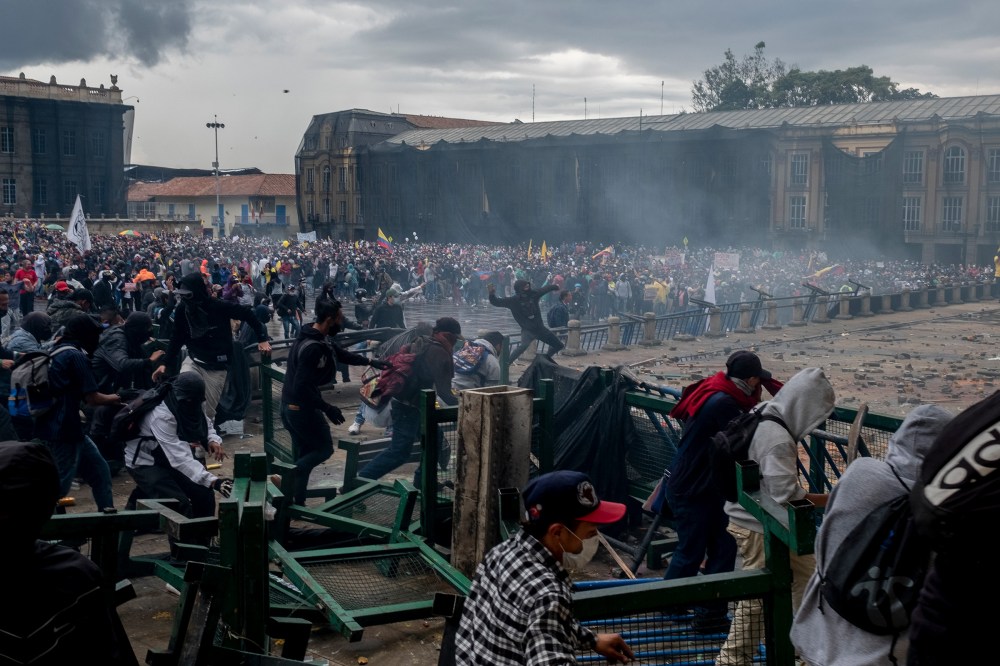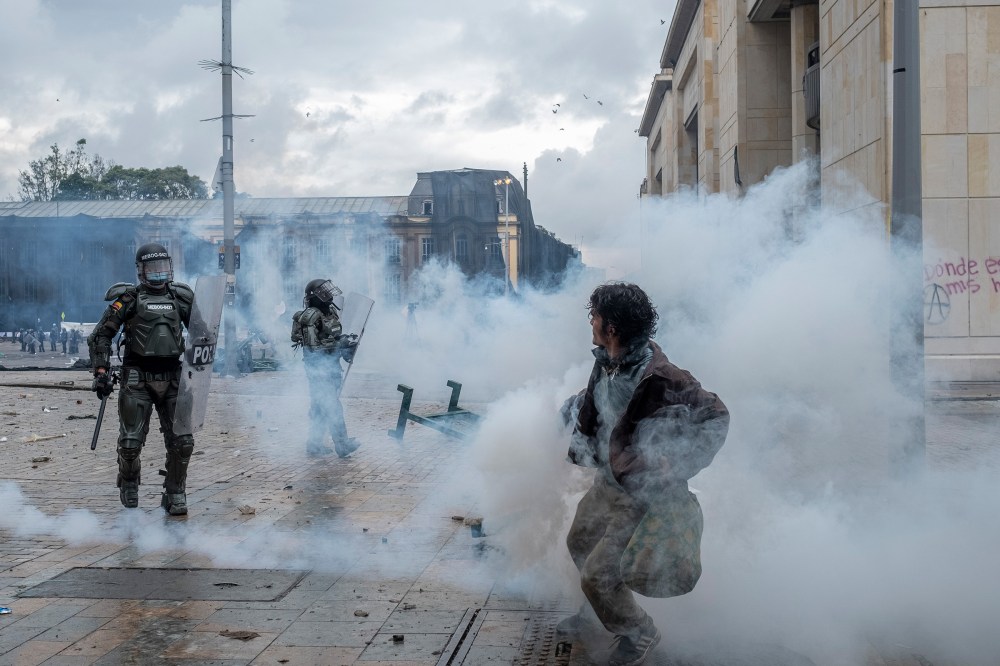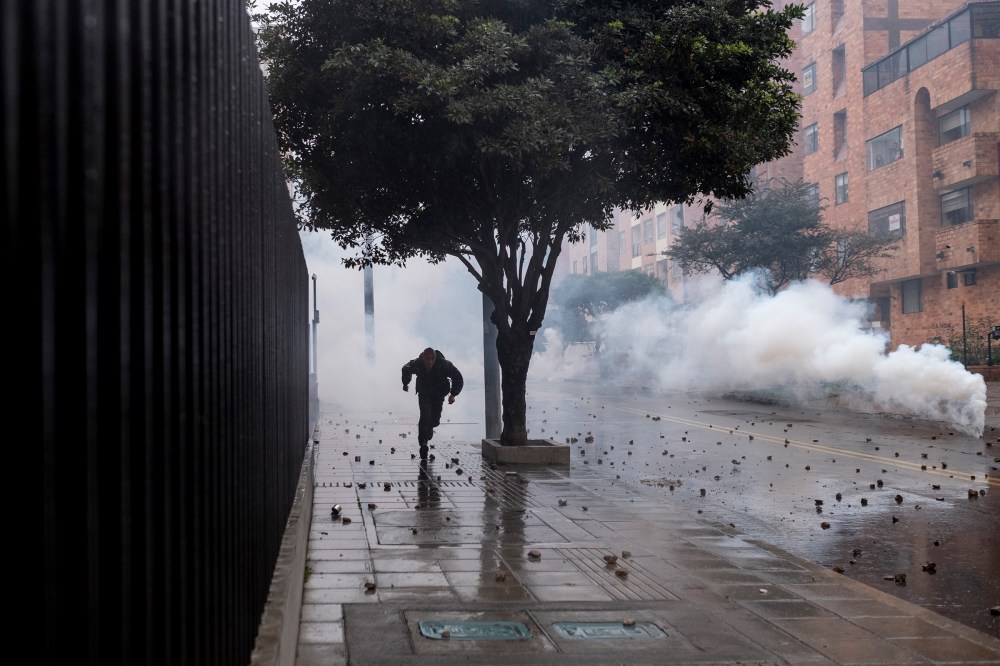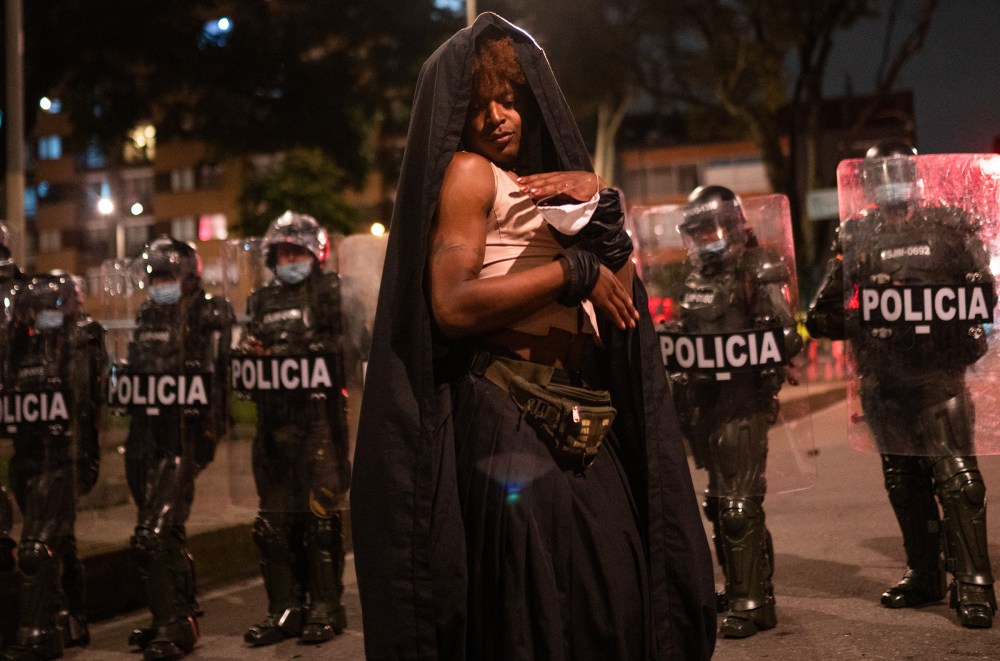Projectiles fire out of an armored car and shoot down a Bogotá highway like fireworks, landing among a group of protesters as they run in the opposite direction. A video, verified and shared by Human Rights Watch, shows what the rights group says is the use of “indiscriminate and dangerous” weapons on civilians by Colombian police.
The incident is the latest in a series of escalating clashes this week between the country’s militarized security forces and tens of thousands of anti-government protesters. Civil society groups say at least 37 have died and hundreds have been injured or arbitrarily arrested. The U.N. and E.U. have both denounced the excessive use of force by police in several cities. A State Department spokesperson said the U.S. is urging “the utmost restraint by public forces to prevent additional loss of life,” while also condemning “violence and vandalism” by protesters.

“We’ve seen people going out to protest peacefully, using art, joy, music. But we’ve also seen protests where there are clashes with police,” says Andres Cardona, who photographed the demonstrations for TIME this week, along with colleagues Santiago Mesa, Paula Thomas and Charlie Cordero of Reojo Colectivo. In Bogotá, and in the western cities of Cali and Pereira, Cardona says, security forces are “using guns and armored vehicles to confront a population that is either unarmed or in some cases, more recently, taking up rocks and sticks to confront the police.”


The mobilizations began with a national strike on April 28 to oppose a new tax bill presented to congress by Colombia’s center-right president Iván Duque. He argued that tax increases were badly needed to cover a gaping hole in public finances created by the COVID-19 pandemic, which caused Colombia’s GDP to shrink by 6.8% in 2020. The measures would have lowered the threshold at which workers start paying income tax, raised levies on businesses and expanded VAT. Duque scrapped the bill on May 2 and his finance minister resigned the following day.


But the protests aren’t only about tax reform. Protesters saw the proposal as evidence that the government doesn’t understand the brutal impact the pandemic has had on ordinary Colombians — 2.5 million people fell out of the middle class in 2020 and more than half of the population is now living in poverty. An index published in November by researchers from across Latin America ranked Colombia as the most unequal country in the region, which is one of the most unequal parts of the world. It also suffers endemic political corruption, brought to light in a series of scandals in recent years.
Trade unions organized the protests, but they have been joined by middle class people and indigenous groups. They are calling for legislative changes to make society more equal, including health and education reforms, as well as police reform, and better implementation of Colombia’s peace accords with Marxist revolutionary groups.


What is happening in Colombia today strongly echoes the inequality protests that spread across Latin America in 2019, driving cities in Chile, Peru, Ecuador, Colombia and elsewhere to a stand still for weeks. Many — though not all — of those movements began in response to policy decisions that raised living costs, and quickly morphed into wide-ranging uprisings over social injustice, poverty, police repression, graft and a host of other problems that plague the region.
Across Latin America, the pandemic has both deepened those concerns and exacted a heavy toll on communities. Excluding the U.S. and Canada, the Americas account for less than 10% of the global population, but 29% of the world’s deaths from COVID-19. A combination of informal economies, weak healthcare systems, resistance to social distancing from some governments and the emergence of new variants of the virus is likely to blame.


Colombia’s reported daily COVID-19 cases have reached near-record levels in recent weeks and authorities re-introduced strict quarantines on five cities in mid-April. As protesters have defied those restrictions, local governments have criticized them for potentially driving up infection rates, disrupting the delivery of medical supplies and giving overburdened hospitals hundreds of injuries to deal with.
Though the majority of protests have been peaceful, Bogotá mayor Claudia Lopez claimed on Wednesday that activity in the street is shifting to be “less protest and more vandalism.” Local media have reported some violent attacks on police, including a fire set at one police station with officers inside, as well as looting in many neighborhoods.

Protesters say the violence is largely the result of the government’s heavy-handed response. On Sunday Duque deployed thousands of soldiers to cities where he said there was a “high risk” to the citizens because of the protest. Advocates have also long called for reform of Colombia’s main police force, which, unusually, reports to the defense ministry rather than the interior ministry. Human rights monitors say militarized security forces are unsuitable for policing protests because they tend to apply the same tactics used to combat rebel groups and organized crime gangs to civilians. The U.N. says it has witnessed “excessive use of force by security agents, the use of real bullets, beatings, and detentions in a very volatile context.”


Colombians have reacted angrily to the government’s crackdown. Images of young people killed by police and video of violent confrontations have circulated widely on social media, accompanied by an outpouring of grief. “The population is getting more and more outraged. Even people who are in favor of the government are outraged at how they’re treating those who go out to protest,” Cardona says.
The frustration could weaken the chances of Duque’s conservative party in national elections in 2022. (Duque will not run, as presidents are limited by law to one term.) Leftwing presidential candidates have not won in Colombia for decades, partly because of the scars inflicted on the country by conflict with leftist guerillas in the 20th century.


In the short term, Duque has called for the demonstrators to enter an organized dialogue with the government, to try to reach an agreement on some of their demands. But the repression of protests and the lack of change after previous demonstrations may have broken the trust needed to bring a quick end to the unrest. The government has refused to rule out introducing a state of emergency, which could expand law enforcement powers, giving them the right to make “preventative” arrests, and restrict press freedoms and citizens’ rights to movement. “All the prospects look really dark,” Mesa says. “There’s no easy way out of this.”


0 Comments